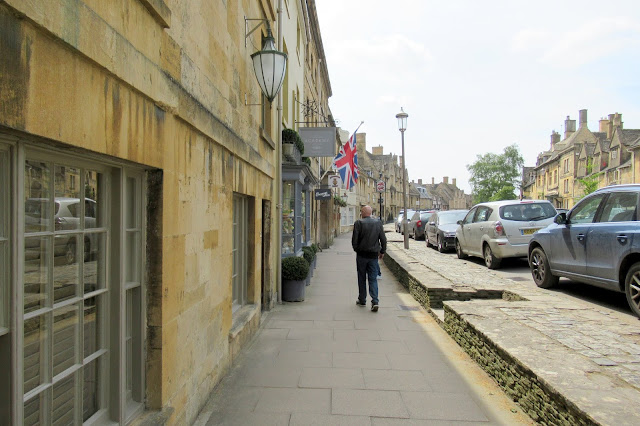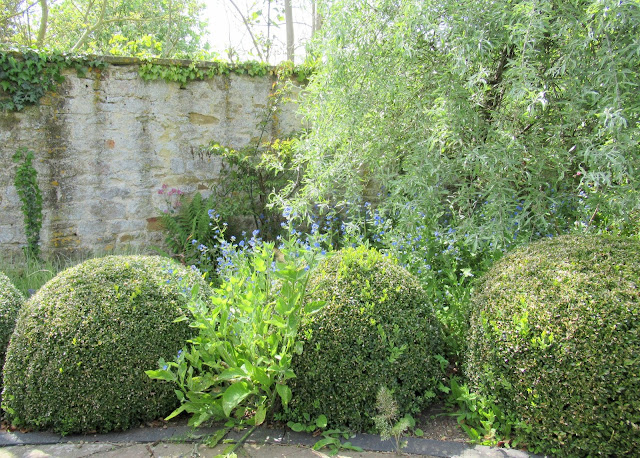On builder-free days we tend to go to the Cotswolds as it's near. I have been longing for a trip to London to visit some galleries but we are usually too tired to have a whole day away, so it's the Cotswolds instead - convenient and relaxing.
Chipping Campden was our choice last Friday. We parked opposite this wisteria-covered cottage.
Chipping Campden was one of the most important of the medieval wool towns and famous throughout Europe. It is this legacy of fame and prosperity that give the town its character
First stop, the Robert Welch shop as we wanted to buy some coasters and add to our collection of cutlery.
It's a lovely shop

The cutlery he designs is stylish, functional and long-lasting.
I particularly liked this salt and pepper set
and these candlesticks.
We then wandered around the village
The ancient Market Hall (now a National Trust property) was built in 1627 for the purpose of giving shelter to the local market selling cheese, butter and poultry.
The main street is long and broad and curves in a shallow arc flanked on either side by an almost unbroken single terrace made up of many different architectural styles. It is lined with a succession of ancient houses each grafted to the next but each with its own distinctive character.
It's wisteria time and there's lots around
This house is the oldest in Chipping Campden and was built by William Grevel in 1380. The house would have been one of the first to have chimneys instead of just holes in the roof. William Grevel was one of the country's most influential wool merchants, a citizen of London and financier to King Richard III.

The Alms Houses were built in 1612 for £1000 - their simple style shows the early influence of the Renaissance in Britain. They were and still are used as the homes of twelve pensioners.
Each dwelling has an upper and lower room and each front door is shared by two houses.
|
We reached the gate to the Banqueting House. It was built in 1613, a noble house in the latest fashion, with elaborate gardens. Thirty two years later it was destroyed by the Royalists, as they withdrew from the town.
St James church was our next stop. We took the path up to the church
turned right into this enchanted path.
We turned around and started retracing our steps, past the Eight Bells
past this grand house
and walked down the High Street
I like the sunken pavement
It was time for lunch so we stopped at the Cotswold House
and their restaurant, the Bistro on the Square.
The garden is glorious.

People chose to eat indoors, but we headed for the sunken terrace, which we had to ourselves.
We ate in glorious isolation
and enjoyed the garden.
As we were leaving
we stopped to have a look at the water feature and then headed for home.











































No comments:
Post a Comment